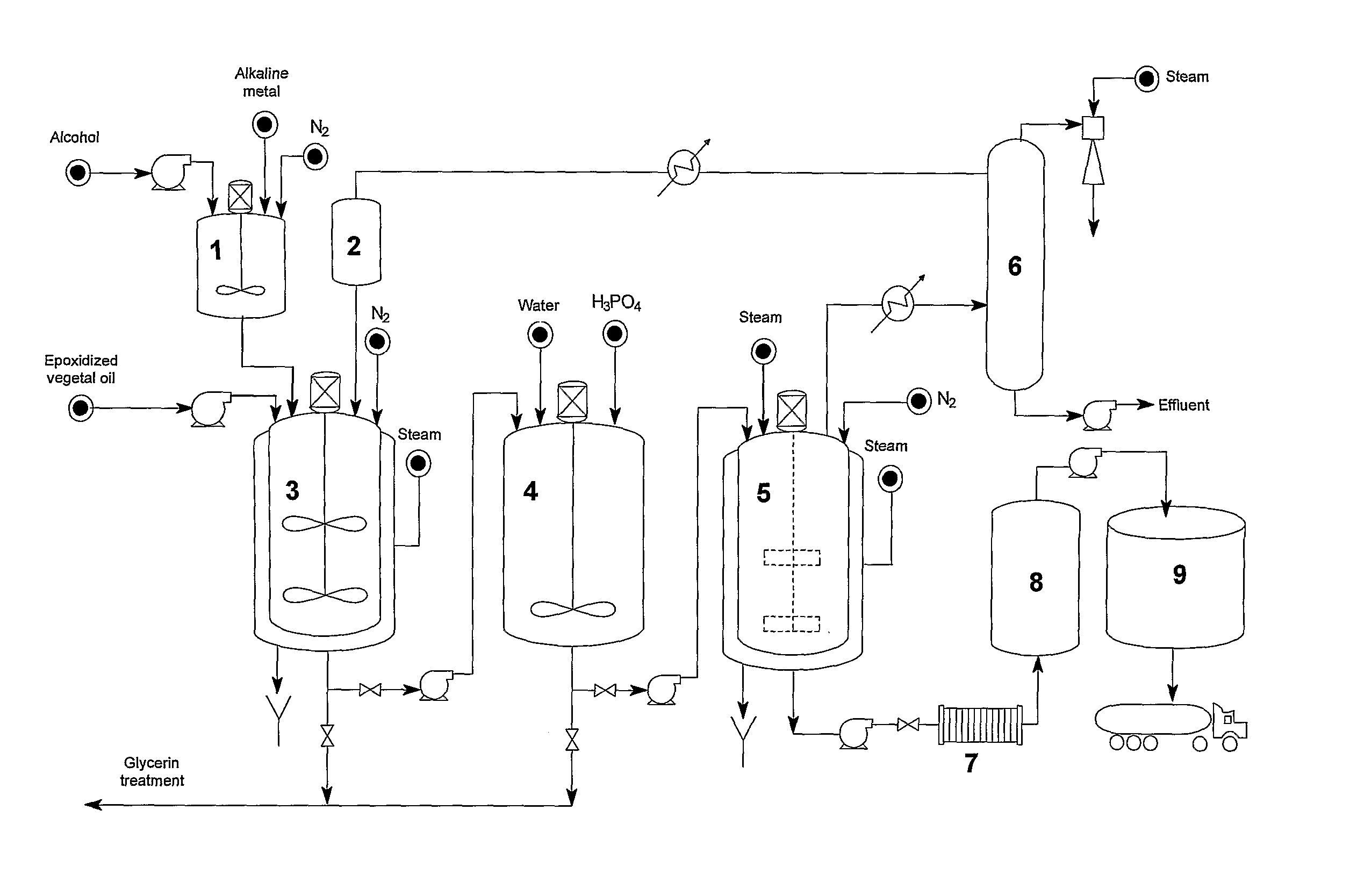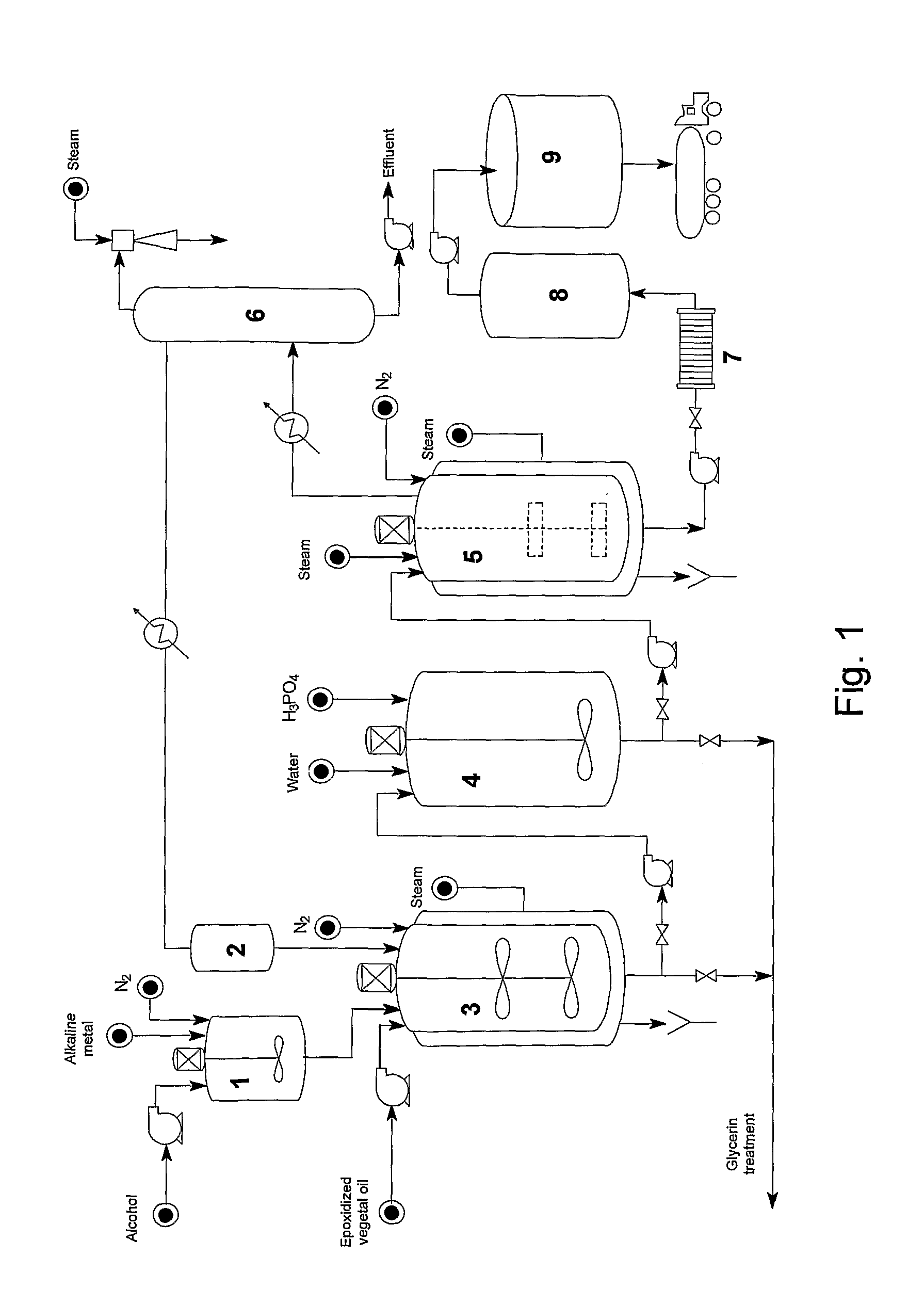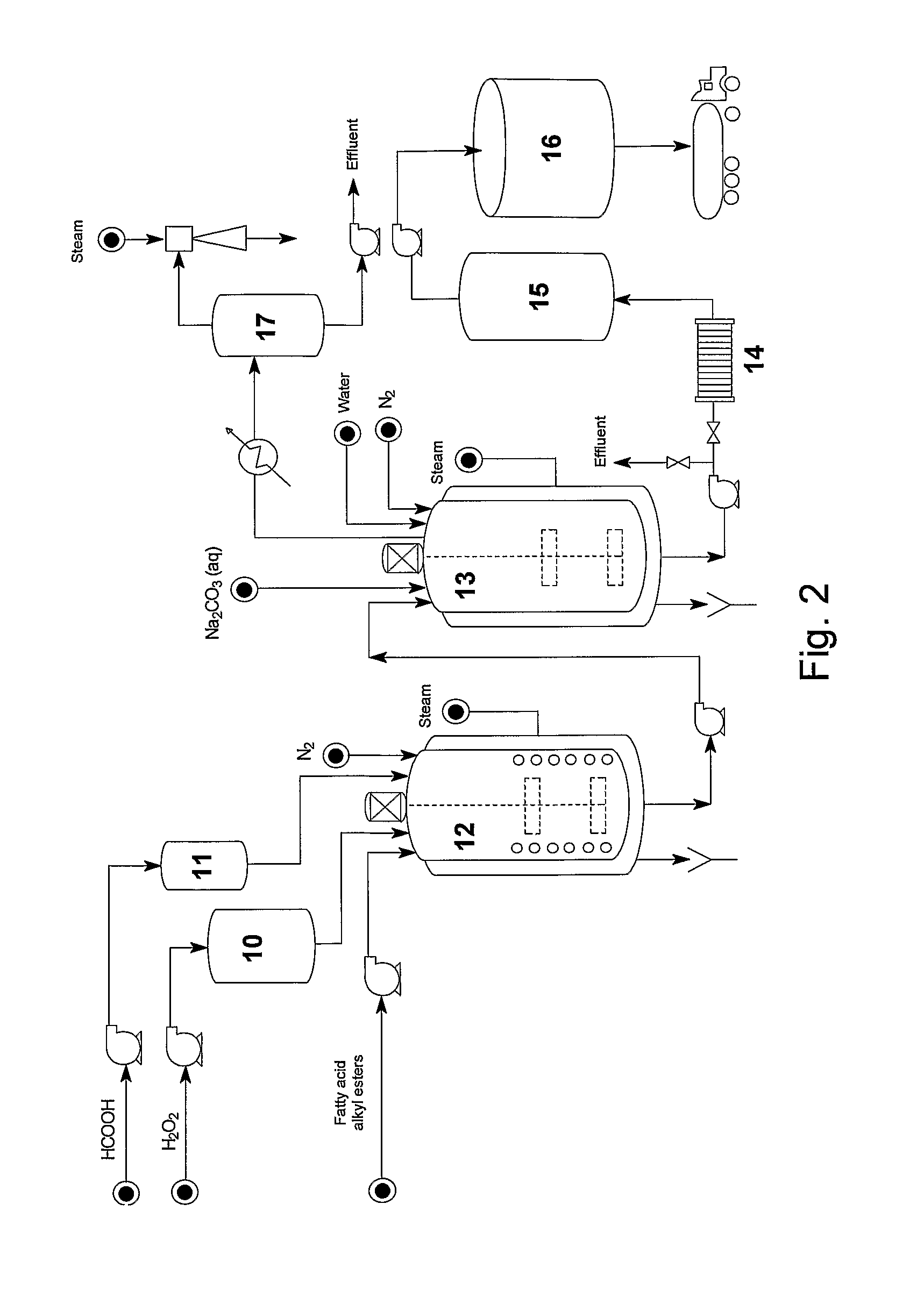Process for modifying vegetable oils and primary plasticizer for vinyl polymers
a technology of vegetable oil and vinyl polymer, which is applied in the direction of ester-hydroxy reaction, fatty acid production/refining, fatty acid production, etc., can solve the problems of reducing the alkalinity of the catalyst, unable to directly convert raw materials containing epoxide groups, and affecting the production efficiency of the product, so as to reduce the risk of soap formation, the effect of high purity level and superior quality produ
- Summary
- Abstract
- Description
- Claims
- Application Information
AI Technical Summary
Benefits of technology
Problems solved by technology
Method used
Image
Examples
example 1
[0057]Approximately 55 kg of isopentyl alcohol were transferred to the catalyst preparation tank. After the system was inerted with nitrogen, 0.7 kg of sodium were added to the alcohol. After the reaction was completed, the alcohol containing the catalyst was transferred to the reactor, previously loaded with 100 kg of epoxidized soya oil (Drapex 6.8; epoxy index=6.7%) at a temperature of 70° C. Agitated at 200 rpm, the reaction was maintained for 2.5 hours at 75° C. After this period, the agitation was interrupted and the system was left in repose for 30 minutes. Most of the glycerin generated in the reaction was then drained off and the reaction mixture was transferred to a decantation tank. Water (around 20 L) and phosphoric acid (in an amount sufficient for neutralization) were added and the mixture was agitated for 15 minutes. Having been left at rest for one hour, the water containing salts and the rest of the glycerin was drained off. The mixture containing the product and al...
example 2
[0058]About 700 g of isononanol were reacted with 4.8 g of metallic sodium in a nitrogen atmosphere. The alcoxide obtained in this manner was reacted with 800 g of epoxidized soya oil (Drapex 6.8; epoxy index=6.7%) during 2.5 hours at 90° C. The neutralization, washing and stripping took place as described in Example 1. After filtering, approximately 970 g of epoxidized fatty acid isononyl esters were isolated, with the following characteristics: acidity index=0.95 mg KOH / g; epoxy index=4.8%; density [20° C.]=0.923 g·cm−3; color APHA=400; viscosity [20° C.]=47 cP.
example 3
[0059]In a nitrogen atmosphere, approximately 800 g of isononanol were reacted with 4.9 g of metallic sodium. After the complete reaction of the sodium with the alcohol, 800 g of refined flaxseed oil were added to the generated alcoxide, and the reaction was maintained for 2.5 hours at 85° C. After the separation of the glycerin, the reaction mixture was neutralized, washed and stripped. After filtering, approximately 1000 g of isononyl fatty esters were isolated. About 500 g of this product were then expoxidized with performic acid generated in situ, in compliance with molar ratios double bounds:formic acid:hydrogen peroxide at 1:0.65:2. The epoxidation has continued for 5 hours at 70° C. and, after washing the reaction mixture with diluted alkali, followed by drying and filtering, approximately 520 g of epoxidized fatty acid isononyl esters were obtained, with the following characteristics: acidity index=0.25 mg KOH / g; epoxy index=6.15%; density [20° C.]=0.942 g·cm−3; color APHA=6...
PUM
| Property | Measurement | Unit |
|---|---|---|
| temperature | aaaaa | aaaaa |
| pressure | aaaaa | aaaaa |
| temperatures | aaaaa | aaaaa |
Abstract
Description
Claims
Application Information
 Login to View More
Login to View More - R&D
- Intellectual Property
- Life Sciences
- Materials
- Tech Scout
- Unparalleled Data Quality
- Higher Quality Content
- 60% Fewer Hallucinations
Browse by: Latest US Patents, China's latest patents, Technical Efficacy Thesaurus, Application Domain, Technology Topic, Popular Technical Reports.
© 2025 PatSnap. All rights reserved.Legal|Privacy policy|Modern Slavery Act Transparency Statement|Sitemap|About US| Contact US: help@patsnap.com



